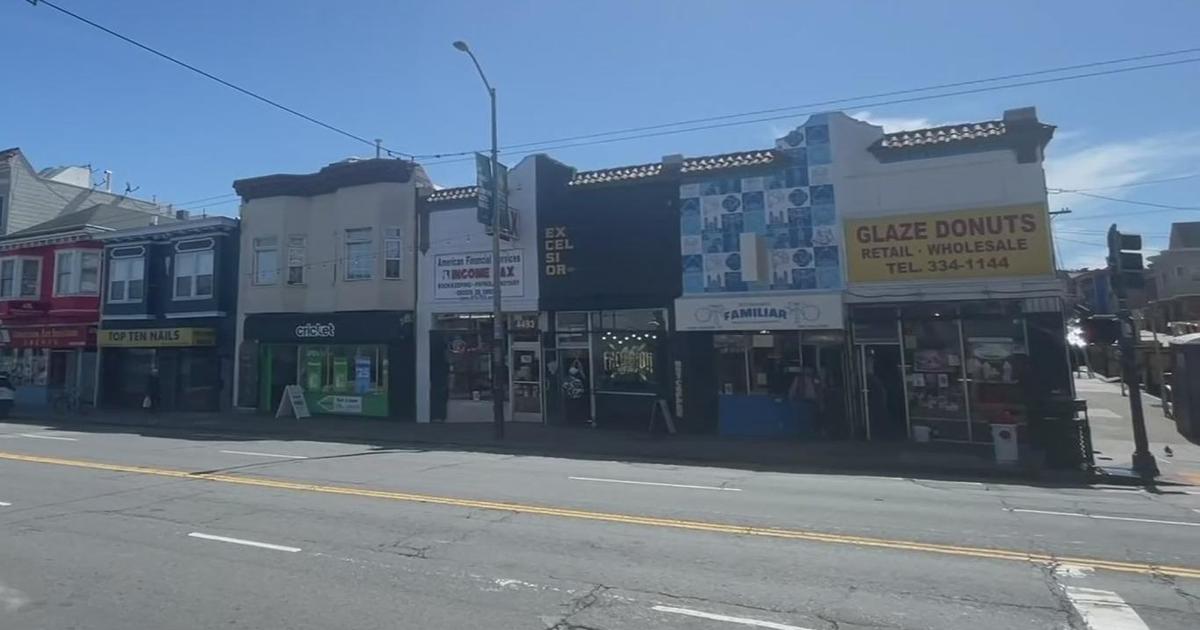Report: San Francisco Residents Pay More For Less Police Efficiency
SAN FRANCISCO (KPIX 5) -- A new report has found that San Franciscans spend more and get less from their police department compared with most major California cities.
But the San Francisco Police Department is refuting the claims.
The policy brief's author from the San Francisco-based non-profit Center on Juvenile and Criminal Justice (CJCJ) said viral videos showing shoplifting first prompted him to look into data. The organization's mission is to reduce society's reliance on incarceration as a solution to social problems.
"This national stampede really, it's really become insane to depict San Francisco as a crime-ridden dystopia of criminals getting away with everything and taking over the streets and the stores is just absurd," said senior research fellow Mike Males.
Males, a former UC Santa Cruz adjuct instructor, said overall SFPD remains a liability to the city.
Among the findings: SFPD has the highest cost per square mile patrolled. Each resident pays about $700 for police services each year, slightly less than Los Angeles residents. But SFPD reports the lowest clearance rate compared with other major cities, including Sacramento, Fresno, San Diego, San Jose and Los Angeles.
"They get less from the police department in terms of efficiency, in terms of making arrests to clear crimes, in terms of transparency, in terms of providing reliable criminal justice data on what people get arrested for and over arresting of African Americans," said Males.
On Tuesday, SFPD responded by calling the policy brief a "politically motivated hit piece" and "factually misleading," noting that it neglected to factor in the city's tourists.
Spokesperson Matt Dorsey stated:
- The San Francisco Police Department is responsible to protect and serve our city's residents and its millions of visitors, of course. CJCJ knows that — or should know it — but misleadingly chose to ignore it to heighten the impact of its PR stunt. Sadly, the timing, tenor, questionable and purposive methodology, and utter lack of collaboration by CJCJ renders its brief politically suspect and factually misleading.
- Moreover, the scale of tourism in San Francisco relative to the other jurisdictions CJCJ analyzed contributes to unique characteristics in which property crime disproportionately outweighs violent crime far more than less-visited police jurisdictions. For your reference, please visit this link to a PDF containing tables of clearance rates since 2016 for San Francisco, three other cities in California, two other national cities, and the national average. These are the figures reported to the FBI Uniform Crime Reports (UCR) Program.
- In addition, CJCJ's report rolls into overall "costs" to San Francisco the operation of SFPD's Airport Bureau, an $80 million slice of our department's budget entirely funded by revenue from the San Francisco International Airport. The fact that the author fails to note this — and accounts this funding source similarly to general fund tax revenue — exposes either a lack of understanding about how the SFPD budget functions, or an unwillingness to explain it accurately.
- The San Francisco Police Department maintains multiple relationships with trusted experts in academia and advocacy organizations as part of its commitment to 21st century police reforms, which the California Department of Justice recently praised as "a significant achievement" and "the only example of voluntary reform at this level in the United States."
- Finally, it bears mentioning that the objectives of police reform require adequate staffing and public investment to be the national leader in 21st century policing that San Franciscans overwhelmingly aspire for the San Francisco Police Department to be.
SFPD also added that it maintained better clearance rates than some other major departments. Its homicide clearance rate was 75% in 2020, which is better than the national average.
CJCJ responded stating in part:
SFPD does not dispute our principal findings about its low and declining crime clearance rate, but does hint that if the city just gave them more money, it might help with police performance. It is true that property crimes are particularly hard to solve, but curiously, SFPD's clearance rate for property crimes (6.0%) is somewhat below the average for the other 5 cities (7.7%), SFPD's violent crime clearance rate (30.7%) is substantially below that of the other 5 cities (40.3%). This is worrisome, and something that needs to be addressed.
SFPD also does not address its failure to specify arresting offense in so many arrests, including 85% of juvenile arrests, or failure to specify Latino ethnicity, or highly disproportionate arrest rate of African Americans.



